Les bases d’un régime adapté à la physiologie humaine
N’oublions jamais que les végétaux mobilisent la source principale de l’énergie vitale et constituent l’alimentation de base. C’est au travers du métabolisme que cette nourriture est transformée en chaînes moléculaires glucidiques, lipidiques et protéiniques, et ainsi utilisée comme matériaux de construction pour le corps. En conclusion et en raccourci, l’homme est tout simplement constitué par ce qu’il mange, de la tête aux pieds.
Quelques recommandations générales
Les conseils prodigués ci-dessous sont généraux et constituent un régime « de croisière » applicable à tous. Cependant, quelques adaptations peuvent être faites en fonction de l’âge ou de certains problèmes de santé. En effet, il faut noter que l’apport protéique doit normalement être plus important chez la personne âgée ou chez l’adolescent. Dès lors, pensez aux œufs ou aux protéines végétales.
Par exemple, il est préférable d’éviter les crudités chez les personnes souffrant de colites et dont la « susceptibilité intestinale » ne supporte pas l’excès de fibres. Dans ce cas, il faudra penser à consommer ces crudités plutôt sous forme de jus qui seront mieux tolérés, mais ceci n’est qu’un exemple parmi d’autres.
À consommer tous les jours
- ·Des légumes et des fruits biologiques dont la ration journalière devrait être de 500 grammes par jour, dont au moins 70 % devraient être consommés crus.
- ·Maximum : un ou deux verres de vin rouge de qualité.
- ·Un peu de céréales, en évitant le blé et le maïs. Préférez-leur le quinoa, le kamut, le riz, l’avoine, l’épeautre ou le sarrasin.
- ·Deux cuillères à soupe d’huile d’olive, une d’huile de colza, de lin et de noix crues, c’est-à-dire non chauffées. Vous pouvez les intégrer à vos vinaigrettes dans les salades, ou les mélanger à vos plats après cuisson.
- ·N’hésitez pas à assaisonner vos vinaigrettes, vos sauces et vos plats avec des herbes aromatiques fraîches.
- ·Intégrez toujours des fibres et des légumes à tous les repas.
- ·Buvez impérativement au moins un litre et demi d’eau par jour, en dehors des repas.
À consommer 2 à 3 fois par semaine
- Des poissons « gras » principalement des mers froides comme maquereau, harengs, sardines…
- ·Des volailles : poulet, dinde, canard, oie, pintade, autruche, provenant d’élevages garantis biologiques et du gibier sauvage. Il est imporant de consommer celles-ci sans la peau.
- ·Des fromages de chèvre et de brebis, éventuellement un peu de gruyère.
Ce régime, avec une légère orientation végétarienne, représente l’idéal de l’alimentation journalière. Il est évident que les quantités et la nature des substances absorbées dépendent largement des dépenses et des activités physiques et mentales de la personne.
Le régime crétois
De nombreuses équipes de recherche ont mis en évidence les bienfaits du régime alimentaire suivi par la population crétoise qui conserve, année après année, une espérance de vie de loin bien supérieure à la durée habituelle observée dans de nombreux autres pays.
Afin de démontrer l’incroyable effet protecteur de ce régime sur la santé, le Dr Serge Renaud l’a appliqué à Lyon sur une population de personnes ayant déjà eu des problèmes coronariens. Les résultats obtenus furent exceptionnels et on assista à 70 % d’amélioration de l’état de santé des patients.
Cette alimentation traditionnelle méditerranéenne est essentiellement composée de :
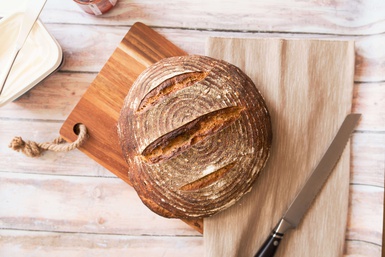
— Céréales et pain, légumineuses, légumes verts, fruits et poissons,
— Presque aucune viande, ni fromage, ni beurre, ni vin,
— Huiles d’olive (riche en acides gras oléiques mono-insaturés), de noix et de colza (riche en acide alpha linolénique polyinsaturé).
Ces conseils s’adressent particulièrement aux personnes présentant des problèmes cardio-vasculaires mais ils devraient être appliqués et adaptés à chacun afin de préserver son capital santé, et ceci dès le plus jeune âge.
Le régime traditionnel japonais
D’autres régimes, comme le régime japonais qui se composait traditionnellement et quotidiennement de riz, de fruits, de légumes, de 60 g de viande, de 90 à 115 g de poisson, d’une 1/2 tasse de lait, d’un œuf, de 2 cuillères à thé de sucre, d’une 1/2 cuillère à soupe de sauce de soja et de 420 ml de bière, constitue un autre exemple d’équilibre alimentaire qui permet d’augmenter les chances d’échapper aux maladies de cœur.
Je cite pour informations quelques régimes stricts très contraignants, mais qui sont d’une réelle efficacité en cas de pathologies graves. Ils n’atteindront leur but thérapeutique que s’ils sont strictement suivis sans aucun écart.
Il me semble qu’il faille faire une différence selon que l’on appartient au groupe des malades, des sujets à risques, ou encore si l’on applique ces conseils diététiques de manière préventive uniquement. L’application de ces différentes propositions peut sembler lourde et contraignante si vous ne souffrez d’aucune pathologie. Par contre, si vous êtes atteint d’une pathologie lourde ou si vous présentez une prédisposition (facteurs héréditaires), il est indispensable de vous conformer de manière stricte aux conseils prodigués par ces différents chercheurs. Il ne tient qu’à vous d’opter pour un choix plus ou moins strict, en fonction de vos goûts, de vos souhaits, et de votre état de santé.
Le régime hypotoxique du docteur Seignalet
Son but est de proposer un régime apportant 95 % des avantages de la méthode nommée «instinctothérpie», mais aussi aisé à pratiquer que la méthode Kousmine ou la méthode Fradin. Ce régime sera désigné indifféremment comme de type originel, de type ancestral ou hypotoxique. Ce dernier s’avère très efficace dans la prévention des maladies cardio-vasculaires, puisqu’il est pauvre en aliments dangereux et riche en aliments protecteurs, mais surtout dans toutes les pathologies dites de « civilisations » telles que cancers, scléroses en plaques, polyarthrite, colopathies…
Voici quelques principes fondamentaux du régime du docteur Seignalet :
1) Exclusion des céréales, à l’exception du riz.
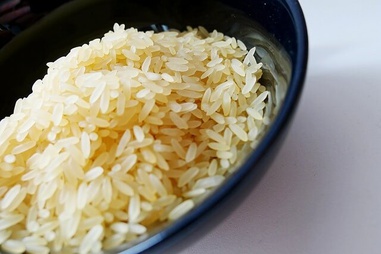
Le blé est dangereux, en raison de la structure de ses protéines et du fait qu’il est toujours cuit. Il faut donc supprimer le pain, les croissants, les gâteaux, les pizzas, les biscuits, les biscottes, les galettes de blé, la farine de blé, les pâtes et les semoules. Le pain complet est pire encore que le pain classique car il est plus cuit et plus riche en molécules de Maillard. L’orge, le seigle et l’avoine font partie de cette famille et sont aussi proscrits.
Le maïs est dangereux pour les mêmes raisons que le blé. Il faut donc supprimer les corn flakes, le pop-corn, les grains de maïs doux et la farine de maïs.
Le riz est resté semblable à sa forme sauvage préhistorique. L’expérience clinique montre qu’il est rarement nocif. Aussi est-il autorisé, aussi bien le riz blanc que le riz complet.
Le sarrasin, le blé noir et le sésame restent, jusqu’à présent, autorisés.
En somme, les céréales modernes, mutées, cuites, incomplètes vieillies sont à proscrire.
Les céréales anciennes complètes, sauvages, crues ou cuites au-dessous de 110 °C, rapidement consommées, peuvent être bénéfiques, au moins chez certains individus.
2) Le lait de vache présente de nombreux inconvénients pour l’homme. Il est donc interdit ainsi que ses dérivés : beurre, fromages, crème, glaces, yaourt. Il faut proscrire les laits animaux, quelle que soit leur origine : chèvre, brebis, jument, etc.
Le lait de soja et les yaourts de soja sont de bons substituts du lait de vache et des yaourts classiques.
3) Les viandes sont considérées comme mauvaises quand elles sont cuites, et comme bonnes quand elles sont crues. En cas de dégoût, on tolérera une cuisson la plus brève et la moins forte possible. Dans une viande non biologique, préférer le maigre au gras, souvent bourré de déchets lipophiles.
Les viandes doivent être de qualité irréprochable, achetées chez un commerçant de confiance. Les volailles, le lapin et les gibiers sont malaisés à ingurgiter crus de même que les abats.
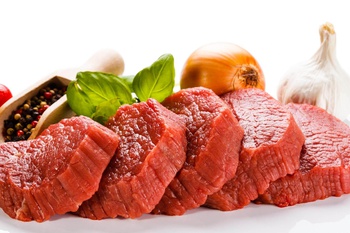
4) Les charcuteries sont autorisées pour autant qu’elles soient crues. Sont donc acceptés : le jambon cru, le saucisson, la saucisse, le chorizo, le salami. Sont exclues les charcuteries cuites : le jambon cuit, le pâté, les rillettes, le boudin, l’andouillette, etc.
5) L’œuf est nocif quand il est cuit mais valable quand il est cru. L’idéal est de se procurer des œufs biologiques. Le blanc, uniquement formé d’albumine et peu ragoûtant, peut être écarté, alors que le jaune sera gobé. Pour les patients qui ne souhaitent pas manger d’œufs crus, on peut les préparer à la coque à température peu élevée.
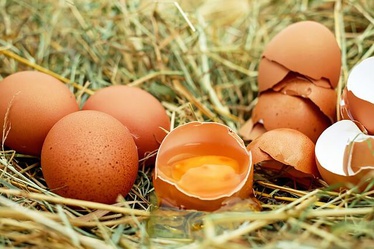
6) Le poisson cuit est moins redoutable que la viande cuite. Cependant, mieux vaut opter pour le poisson cru. Une recette simple consiste à faire mariner de fines tranches de poisson, du saumon par exemple, dans du jus de citron additionné d’un peu d’huile d’olive, et aromatisé par de fortes quantités de coriandre, d’aneth et de basilic.
7) Les crustacés, les mollusques et les coquillages sont permis. Les coquillages crus, les huîtres, les moules, les palourdes, etc. sont même conseillés.
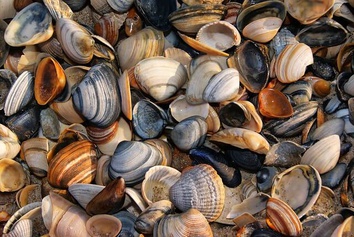
8) Les légumes verts sont très largement autorisés : asperge, artichaut, aubergine, betterave, champignons, chou, fenouil, épinards, haricot vert, navet, poireau, pomme de terre, salsifis et légumes exotiques. S’ils sont trop durs pour être consommés crus, ils sont cuits à la vapeur ou encore à l’étouffée.
9) Les légumes secs ou légumineuses : pois, haricot blanc ou rouge, lentilles, pois chiche, fève, quinoa, tapioca et soja. Ils sont autorisés, après une cuisson analogue à celle des légumes verts.
10) Les crudités : on usera largement des aliments appartenant à ce groupe : carotte, céleri, champignons, concombre, cresson, endive, mâche, melon, poivron, radis, salades vertes, tomate.
11) Il est fait grandement appel aux fruits : abricot, ananas, banane, cerise, fraise, framboise, mandarine, orange, pamplemousse, pêche, poire, pomme, prune, raisin, fruits exotiques, pour ne citer que les principaux.
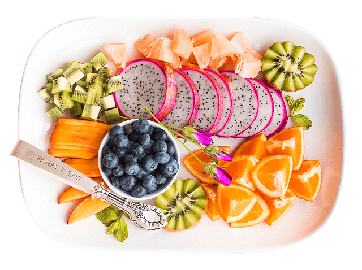
12) Les fruits secs ou conservés sont largement représentés dans le régime : datte, figue, amande, arachide, noisette, noix, olive. Ils doivent être mangés crus. Ainsi, l’arachide grillée sera écartée au profit de l’arachide crue.
13) Aliments divers conseillés : le miel et les pollens, produits naturels par excellence, et aussi les graines germées de légumineuses, ou de céréales ancestrales ou peu manipulées par l’homme : soja, lentilles, pois chiche, haricot, riz, sarrasin, épeautre, mil, luzerne.
Le chocolat, qui est cuit et contient du sucre raffiné, est à limiter. On choisira du chocolat noir, biologique, contenant du sucre complet.
Les confitures et le sucre blanc doivent être écartés au profit du sucre complet, beaucoup plus riche en potassium, en magnésium, en calcium, en phosphore, en fer et en vitamines (Dejean, 1989).
14) Les huiles doivent être consommées en quantités assez fortes. Bien entendu, Je parle ici d’huiles vierges crues, obtenues par première pression à froid (voir CHAPITRE 1 – paragraphe 14 . Les lipides).
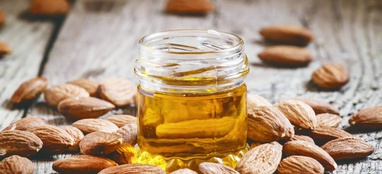
15) Les condiments sont tous autorisés : sel, poivre, vinaigre, citron, oignon, ail, moutarde, persil, câpre, cornichon, curry et plantes aromatiques. La quantité de sel doit être limitée et il faut préférer le sel complet, beaucoup plus riche en minéraux.
16) Les boissons : il faut absolument exclure les boissons riches en sucre blanc et en acide phosphorique, puissants déminéralisants (coca, sodas, jus de fruits du commerce), ainsi que la bière qui est assimilable à une céréale. Les autres boissons sont permises. L’eau est conseillée en grande quantité. Elle doit être la moins minéralisée possible afin d’éviter une surcharge des émonctoires. Éviter l’eau du robinet, polluée et souvent fortement chargée en fluor. Le café et le thé sont tolérés en quantité raisonnable. La chicorée est encouragée. Les boissons alcoolisées autres que la bière sont autorisées à dose modérée.
Le régime végétalien
Cette méthode condamne en bloc toute nourriture d’origine animale. Les produits animaux ainsi que tous les sous-produits tels qu’œuf, lait, fromage… en sont totalement exclus. Dès lors, l’alimentation est essentiellement constituée de légumes aqueux et de légumes secs (haricots, fèves, lentilles…), de céréales, de fruits et de fruits secs (amandes, noisette…). Les défenseurs de ce régime affirment que les protéines végétales sont exemptes de cholestérol et qu’elles n’apportent pas de purines. Les purines sont considérées comme des éléments très acidifiants pour l’organisme puisqu’elles sont transformées en acide urique et sont très nocives. Ce régime apporte sans conteste toutes les vitamines nécessaires à l’homme et serait adapté à sa physiologie. Cependant, selon d’autres recherches, le thé, le café, le soja, les levures ou encore les légumineuses sont très chargés en purines, et ceci parfois davantage que certaines viandes. En ce qui concerne l’argument du cholestérol, il ne faut quand même pas perdre de vue que l’alimentation ne serait responsable que d’un cinquième seulement du cholestérol total contenu dans le corps. Et n’oublions surtout pas qu’une partie du cholestérol est indispensable au métabolisme, puisqu’il intervient dans le transport des lipides par le sang ainsi que dans la synthèse de certaines hormones essentielles.
Les céréales, les légumineuses et les oléagineux sont très caloriques et contiennent une très forte proportion lipidique. Dès lors, certaines personnes observant ce type de régime à long terme dépassent leurs besoins caloriques, et se retrouvent avec un taux alarmant et anormalement haut de cholestérol et de lipides.
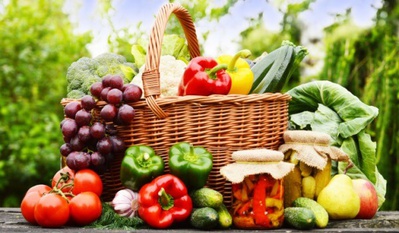
Il est certain que l’excès de viande peut amener à l’hypertension ou à l’urémie, ou encore apparaître comme un des facteurs cancérigènes, et que dès lors il ne faut pas en abuser. Cependant, tous les acides aminés ne sont pas présents dans le règne végétal et la sécrétion chlorhydrique de l’estomac n’est activée que par les aliments protéiques d’origine animale. Cette sécrétion stomacale influence à son tour les sécrétions duodénales comme la pancréozymine, la cholécystokinine ou la sécrétine, autant d’enzymes participant à une digestion optimale. En l’absence totale de protéines animales, il apparaît donc qu’une digestion totale ne peut avoir lieu.
On constate donc que ce type de régime peut être pratiqué de façon ponctuelle si l’on vise une perte de poids ou une diminution de cholestérol, mais qu’il ne peut être envisagé comme régime quotidien en continu puisqu’il entraîne à long terme plus de dégâts pour l’organisme que de résultats positifs.
Le crudivorisme
Il s’agit d’un régime de type végétarien qui privilégie l’aliment cru. Les crudivores consomment peu d’aliments amylacés, à base d’amidon, tentant ainsi d’éviter les surcharges colloïdales. Ils consomment également peu de produits animaux et de viande rouge, tentant ainsi de réduire les surcharges acides de type cristalloïdal. Si les apports en amidon ne sont pas suffisants, sachez que l’organisme détourne et utilise certains acides aminés issus de la digestion des aliments protéiques afin d’alimenter la néoglucogenèse et de transformer ces éléments en glucose. Ce processus est indispensable pour faire face aux besoins énergétiques du corps. C’est une façon détournée permettant de fournir l’énergie nécessaire aux efforts de l’organisme en utilisant les aminoacides plutôt que les sucres lents de type amidons qui doivent normalement remplir cette fonction. Les acides aminés ainsi détournés ne peuvent dès lors plus remplir leur rôle du point de vue anabolique. C’est-à-dire qu’ils ne peuvent plus servir d’éléments de construction pour nos tissus et nos sécrétions. On assiste parfois alors à des anémies ou à des pertes de vitalité importantes.
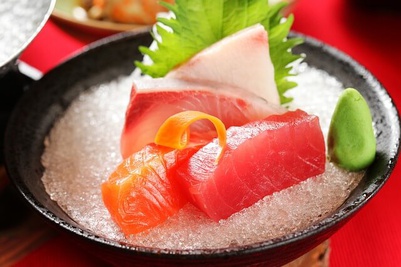
A nouveau, ce type de régime peut être pratiqué sur une courte durée avec un but bien précis tel que perte de poids. Cependant, un excès de consommation de fruits entraîne souvent une augmentation d’acide. Ces derniers, trop nombreux, ne peuvent être totalement métabolisés au niveau hépatique, et une partie seulement sera transformée en glycogène et stockée, alors que l’excès d’acide s’accumulant dans l’organisme nécessitera d’être tamponné par les réserves de bases minérales du corps, entraînant à la longue une déminéralisation.
Ce régime apparaît comme excellent dans des conditions de vie « idéales », c’est-à-dire sous un climat tropical, sans aucune contrainte, ni aucun stress et lorsqu’une grande partie de l’énergie vitale ne doit pas être mobilisée par le système nerveux végétatif. Ce qui ne représente en rien les conditions de vie dans notre société industrialisée, stressante, et à haut rendement.
Le régime dissocié
Défendu par le grand hygiéniste Shelton, et repris ensuite par de nombreux autres auteurs dont un des plus connus est certainement Montignac. Il présente des résultats thérapeutiques intéressants toujours en respectant l’idée de ne pas en faire son type d’alimentation permanente.
Il s’agit d’isoler les glucides ou les protides au cours d’un même repas. Au cours d’une même journée, il y aura donc 2 repas principaux dont l’un sera à dominante azotée et acide, et avec prédominance d’une digestion stomacale, tandis que l’autre sera de type carboné et alcalin avec prédominance d’une digestion plutôt buccale et intestinale. Qu’il s’agisse de l’un ou l’autre type de repas, ce dernier sera toujours accompagné de crudités ou de légumes cuits. Les fruits sont déconseillés en cours de repas et recommandés vers 10 et 17 heures afin de faire également l’objet d’une digestion spécifique et séparée du bol alimentaire.
Cette méthode réduit les phénomènes de fermentation ainsi que la production de toxines intestinales. Grâce à ces conseils, on a assisté à des améliorations, voire même à des guérisons de dermatoses, de catarrhes ou d’arthrose.
Ce régime appliqué à la lettre, et sans aucun écart durant une période prolongée, entraîne un amaigrissement important, mais surtout une perte de vitalité et d’énergie.
Ce phénomène pourrait s’expliquer par le fait que, durant le repas azoté, il se produit une sécrétion importante de glucagon qui agit au niveau du foie en transformant la plupart des acides aminés en glucose, et que par contre la sécrétion d’insuline responsable de la digestion glucidique est faible. Généralement, c’est le repas du midi qui est azoté ou protéiné, et celui du soir qui comporte les glucides qui entraîneront une forte production d’insuline. Cette hormone possède un autre rôle au niveau de l’anabolisme protidique, car elle permet aux aminoacides de traverser les membranes cellulaires. Or, la plus grande partie des acides aminés absorbés le midi a été utilisée lors de la néoglucogenèse pour être transformée en glucose grâce au glucagon. Dès lors, leur quantité n’est plus suffisante pour qu’ils puissent remplir leur rôle membranaire. Cette carence tissulaire pourrait expliquer l’affaiblissement et l’amaigrissement rapide procurés par ce type d’alimentation.
Dans ce cas, les troubles de type cristalloïdaux seront bien évidemment améliorés, et les surcharges pondérales et colloïdales diminuent de façon spectaculaire.
Il existe d’autres régimes, comme le régime balancé (régime où la dissociation s’étale sur deux jours), le céréalisme (basé essentiellement sur la consommation de graines et de céréales), ou encore ceux qui consistent à réduire soit les lipides (pour l’athérosclérose ou l’hypercholestérolémie), soit les protides (lors de problèmes rénaux ou hépatiques), soit les glucides (en cas de diabète ou de déficience insulinique), ou encore qui visent la réduction des fibres lors de fragilité des muqueuses intestinales ou oesophagiennes. Ils peuvent tous être pratiqués ponctuellement afin d’atteindre un but précis lors d’un problème particulier, mais il est fortement déconseillé de les adopter comme régime quotidien de croisière.
Il semble que dans notre monde actuel, même si l’on adopte une alimentation irréprochable et proche de la perfection, la complémentation soit indispensable afin d’être en forme, de préserver sa santé, ou encore pour freiner le vieillissement de l’organisme en général, ou du cerveau en particulier. Dans une approche de santé de type holistique, il faut fournir quotidiennement à notre organisme la totalité des nutriments et tous les éléments dont il a impérativement besoin pour fonctionner. Il apparaît que la quantité physiologique de protéines, de vitamines, de minéraux, d’oligo-éléments, ou encore d’acides gras, requise par le corps pour un fonctionnement optimum, soit souvent de loin supérieure aux Apports Quotidiens Recommandés (AQR) préconisés par les organismes officiels en place dans nos pays. Et il apparaît également que, de nos jours, cette « quantité optimale » ne peut pratiquement jamais être apportée par notre seule alimentation, aussi « parfaite » soit-elle ! C’est donc grâce aux compléments nutritionnels sous toutes leurs formes, poudre, comprimés, gélules ou liquide que vous trouverez le « quota » requis et la santé idéale.




